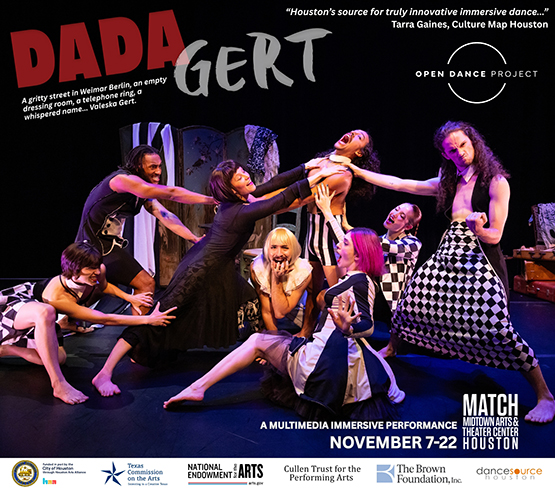Change always comes at a cost, and more often than people realize, it is a human cost. At the height of urban renewal, the development of neighborhoods and highways throughout the United States destroyed thousands of black communities. It ebbs and flows with the movement of populations between neighborhoods as people are priced or forced out and displaced, and it is a practice that continues to this day.
The exhibition also serves as part of a layer of Rebirth in Action, a multiyear collaboration between CAMH and Houston’s Freedmen’s Town Conservancy, which has cultivated artist residencies, fellowships, and exhibitions.
“Redemption and salvation feel like words that are on my mind as it relates to Freedmen’s Town and to my practice,” Gates said. “I happen to know a little bit about what it means to be redeemed and what it means to salvage and to salvate and to be saved.”
“I’ve been trying to think about how you give dignity to things,” Gates said. “I think you give dignity to things and people by talking about them, by framing things in truth, by telling whole stories, by investing in them.”
By shedding light on the real value and depth of black spaces, which are so often devalued through disinvestment, he reframes them as “sites of American resilience, liberation, and redemption.”
Freedmen’s Town was established in 1865 by a thousand former slaves who built homes and churches and laid handmade brick to pave the roads, honored in the exhibition by a series of four brick presses, including Stainless Labor and Analog Investments, sculpted in different materials. It’s a gem quite literally hidden within Houston, blocked in by development and retention walls, preserving the history of a community like so many across the country.

1 ⁄7
Installation view of Theaster Gates: The Gift and The Renege at Contemporary Arts Museum Houston, 2024. Photo by Alex Barber. © Contemporary Arts Museum Houston and Theaster Gates Studio.

2 ⁄7
Installation view of Theaster Gates: The Gift and The Renege at Contemporary Arts Museum Houston, 2024. Photo by Alex Barber. © Contemporary Arts Museum Houston and Theaster Gates Studio.

3⁄ 7
Installation view of Theaster Gates: The Gift and The Renege at Contemporary Arts Museum Houston, 2024. Photo by Alex Barber. © Contemporary Arts Museum Houston and Theaster Gates Studio.

4 ⁄7
Installation view of Theaster Gates: The Gift and The Renege at Contemporary Arts Museum Houston, 2024. Photo by Alex Barber. © Contemporary Arts Museum Houston and Theaster Gates Studio.

5 ⁄7
Installation view of Theaster Gates: The Gift and The Renege at Contemporary Arts Museum Houston, 2024. Photo by Alex Barber. © Contemporary Arts Museum Houston and Theaster Gates Studio.

6 ⁄7
Installation view of Theaster Gates: The Gift and The Renege at Contemporary Arts Museum Houston, 2024. Photo by Alex Barber. © Contemporary Arts Museum Houston and Theaster Gates Studio.

7 ⁄7
Installation view of Theaster Gates: The Gift and The Renege at Contemporary Arts Museum Houston, 2024. Photo by Alex Barber. © Contemporary Arts Museum Houston and Theaster Gates Studio.
Freedmen’s Town has faced disruption after disruption over the course of decades, losing land, history, and infrastructure, including the destruction of some of the iconic brick streets. The remainder of these streets serve as a reminder of the potential held within black spaces.
“I found myself in Freedmen’s Town, looking at a condition that looked very, very familiar to me,” Gates stated. In communities like these, you find new development co-mingling with people who do everything they can to keep their community and culture alive.
“That’s a backdrop for understanding my own practice because I feel like on the south side of Chicago, I was having to do the same thing…I was having to look at the same conditions, where I would leave for school in the morning and when I came home a building would be bulldozed.”
It becomes a sort of folklore, a story of a place that was once thriving until a highway went through a neighborhood.
“Banks left; resources left, and the land that was good land was taken from Freedmen’s Town and given to others, and new neighborhoods were built,” Gates explained. “It feels like Urban Planning 201, where in 50 years it’ll be black again then white again, and if it’s ever black again, it’ll only be because resources left.”
“In all those abandoned lots, I had to believe that something great had happened there,” he explained. “The space wasn’t void of life. It wasn’t vacant because black people willed it to be vacant. There was still something alive there.”
Perhaps best highlighted by Gates’s text WE WILL SAVE OURSELVES (2024), torched across enamel paint on steel and reminiscent of the calls that echo out of these communities, and the poetic tinge of hope in the text laid across titles in the row of bound books that constitutes From My People and My Skin (2019), the residents of these neighborhoods remain resilient.
—MICHAEL McFADDEN





